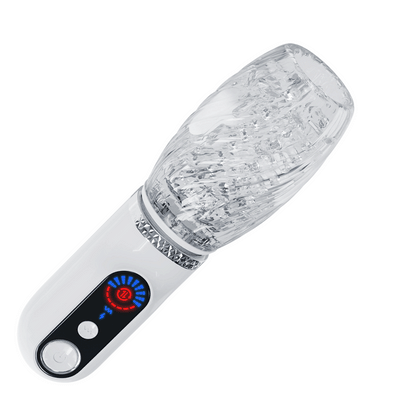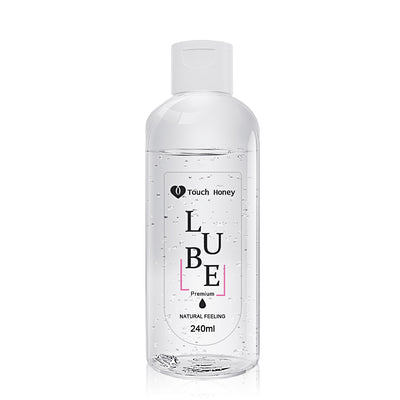Where does the squirt come from?
When it comes to the fluids that women may release during sexual activity, it's important to distinguish between urine, squirting, and female ejaculation.
In the case of urine, a weakened pelvic floor can lead to the involuntary release of this fluid, resulting in a leakage of urine.
Squirting, often depicted in adult films, involves the expulsion of a copious liquid. Its primary component is diluted urine.
On the other hand, female ejaculation is distinct from squirting, and the quantity varies among individuals. It can manifest as small droplets, a minor release, or a substantial amount of fluid.
To gain a deeper understanding of squirting and female ejaculation, it's crucial to comprehend the nature of an orgasm.
Sexologists describe orgasm as a dual phenomenon, involving both a cerebral aspect (a moment of disconnection and heightened pleasure) and a physiological component (a series of involuntary contractions lasting 15 to 20 seconds). The nature of fluids secreted during orgasm varies based on its intensity.
Female ejaculation is characterized by the release of a thick, white, semen-like liquid, more likely to occur during orgasm. In contrast, squirting involves the expulsion of dilute urine and is more regularly observed in a smaller percentage of women.
While ejaculation is typically linked to orgasm, it can also occur through the compression of pelvic muscles, during childbirth, or when Skene's glands are full. Squirting, however, is exclusive to instances of maximum stimulation.
It's essential to note that women can experience orgasm without ejaculation or squirting, known as a dry orgasm. This highlights the diversity in female sexual responses.
What is squirting?
Squirting, derived from the Anglo-Saxon term "squirt," refers to the expulsion of a clear, odorless liquid composed of urea and other urine-like components. This fluid is released from the bladder and expelled through the urethra when the G-spot is adequately stimulated. Many women who experience squirting often describe a sensation similar to urination due to the involvement of the urethra.
It's crucial to clarify that squirting is distinct from female ejaculation. Female ejaculation involves the release of a whitish secretion, denser in consistency, and is seldom expelled as a forceful jet from the vagina. This ejaculation is also covered by natural lubrication and is not necessarily tied to orgasm, contrary to what some may believe based on certain depictions in pornography.
It's important to note that not all women can experience squirting, as individual bodies respond differently to sexual stimulation. Sexologists emphasize that various factors influence squirting, and these factors vary among individuals. The occurrence of squirting is linked to the Skene's glands, which function similarly to the prostate in men. These glands are responsible for the release of the liquid associated with squirting, and their size can influence the likelihood of experiencing this phenomenon. Smaller Skene's glands may reduce the chances of squirting.
How to squirt?
It's important to recognize that while all women have the potential to experience it, not every attempt will necessarily lead to success. Achieving squirting involves honing the same skills essential for a fulfilling sexual relationship: understanding where to touch, creating heightened arousal, and maintaining a relaxed state. Additionally, it's crucial not to fixate on the outcome, as excessive focus and pressure can hinder the natural flow of pleasure, much like the impact of overthinking during an orgasm.
The journey towards squirting often begins with foreplay, gentle caressing, and arousal to pave the way for continued genital stimulation. While squirting can occur through penetration, it is generally more attainable by manually stimulating the G-spot and clitoris or using specialized toys designed for this purpose. The key lies in exploration and finding what feels most enjoyable and comfortable for you.
Tips to achieve a squirt
Stimulating the "G" spot is a common approach to achieve squirting, and its location can vary among individuals. If you're unsure about the location of your "G" spot, you can follow these steps to find it:
Arousal:
- Begin by ensuring you are sufficiently aroused. Sexual excitement can cause the "G" spot to become more pronounced and easier to locate.
Location:
- The "G" spot is situated approximately 4 cm from the vaginal opening, specifically at the top of the front wall of the vagina. This region may feel slightly rough or textured compared to the surrounding tissue.
- To find the "G" spot, insert your index finger and middle finger into the vagina with the palm of your hand facing up. You should arch your fingers upward and rest on the upper part of the vaginal opening as if you wanted to reach the navel.
- When you feel a spongier area of vaginal tissue that stands out above the rest, you will have found the G-spot. In addition, when you touch it you will feel how arousal increases. The fingers should form a hook and move them gradually making the “come” signal (when we are trying to tell someone to come closer), or by rotating and pressing the vaginal wall.
The most effective way to achieve our goal is to stimulate the clitoris and the G-spot at the same time.
- If you're interested in helping your partner experience squirting, there are different methods you can explore, whether through oral sex or intercourse. During oral sex, consider using your tongue or fingers to stimulate the clitoris. Make circular movements with varying pressures and speeds, and, using your other hand, gently insert one or both fingers into the vagina to stimulate the G-spot. Communication, attentiveness to your partner's responses, and a mutual understanding of preferences are crucial for a positive and enjoyable experience.
- In the realm of intercourse, numerous positions allow for sustained and comprehensive G-spot stimulation. Positions like Doggie or Cowgirl can be particularly effective. As they engage in these positions, either partner has the option to incorporate manual clitoral stimulation using their fingers. The key to a satisfying experience lies in open communication, a shared understanding of preferences, and a willingness to explore and adapt together.
In conclusion, we recommend experimenting and exploring your "G" spot to discover the movements that bring you the most excitement. Understanding your body is crucial for both intimate moments with a partner and solo pleasure. This self-awareness enables you to identify your most sensitive and erogenous zones, allowing you to effectively communicate your desires to your partner.
It's essential to ensure the intimate area is well-lubricated before and during stimulation for comfort, relaxation, and heightened pleasure and sensitivity.
Additionally, don't hesitate to introduce sex toys into your play and experimentation. They serve as perfect complements for trying new sensations either independently or with a partner. In the market, you can find specialized vibrators designed for G-spot and clitoral stimulation, as well as clitoral suckers, offering a range of exciting possibilities for your sexual exploration.











Leave a comment